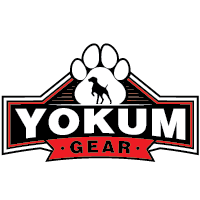In the world of pet accessories, the modern dog harness has emerged as a must-have for dog owners. The shift from traditional collars to harnesses is largely attributed to the benefits they offer in terms of control, comfort, and safety for both dogs and their owners. However, with a multitude of options flooding the market, choosing the perfect modern dog harness can be a daunting task. This article will guide you through the essential factors to consider when selecting the ideal harness for your furry friend.
Understanding the Benefits of a Dog Harness
Before delving into the selection process, it's crucial to understand why a dog harness is beneficial. Unlike collars, which can cause strain on a dog's neck, harnesses distribute the pulling force across the shoulders and chest, reducing the risk of injury. They offer better control, especially for dogs that tend to pull on the leash. Additionally, harnesses can prevent dogs from escaping, making them a safer option for adventurous pets.
Types of Dog Harnesses
Dog harnesses come in various styles, each serving different purposes. Here are the most common types:
1. Back-Clip Harness
This type features a D-ring on the dog's back, making it a popular choice for well-trained dogs and casual walks. It's easy to put on and generally more comfortable for the dog.
2. Front-Clip Harness
Front-clip harnesses have the D-ring on the front of the chest. They are designed to discourage pulling, making them an excellent option for training purposes.
3. Dual-Clip Harness
Featuring both front and back clips, this versatile harness provides the benefits of both styles. Owners can switch between attachment points based on their dog's behavior and training needs.
4. Step-In Harness
Easy to put on, step-in harnesses require the dog to step into the harness before securing it with buckles. They are typically favored by small dog owners.
5. No-Pull Harness
No-pull harnesses are specifically designed to counteract pulling behaviors. They often include a front attachment point and unique design elements, like straps that tighten slightly when the dog pulls.
Key Factors to Consider
When choosing a dog harness, consider the following factors to ensure you select the best option for your pet:
1. Size and Fit
Accurate measurement is crucial. Measure around your dog's chest and consult the manufacturer's size chart. A properly fitting harness should be snug but not too tight, allowing for two fingers to fit between the harness and the dog's body.
2. Material and Durability
Choose a harness made from high-quality materials like nylon or leather. Look for reinforced stitching and sturdy buckles to ensure longevity and safety.
3. Comfort
Padding on the chest and straps can prevent chafing and enhance comfort. Opt for a harness with adjustable straps to customize the fit to your dog's body shape.
4. Ease of Use
Consider how easy the harness is to put on and take off. Buckles, Velcro, or step-in designs can affect the convenience factor, especially if your dog is fidgety.
5. Purpose
Determine the primary use of the harness. For training, a no-pull or front-clip harness may be ideal. For hiking or running, a harness with added support and features like reflective strips can be beneficial.
Conclusion
Choosing the perfect modern dog harness may require some research and consideration, but the benefits are well worth the effort. By understanding the different types of harnesses and the key factors to consider, you can find a harness that ensures safety, comfort, and control for your beloved pet, enhancing your outings together.

